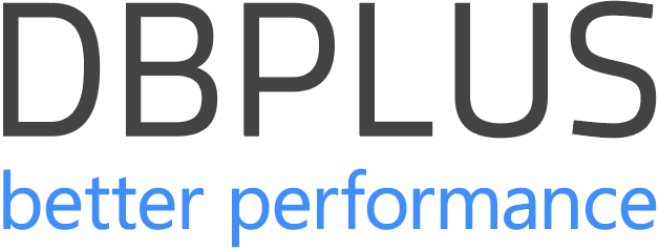Considering the sheer volume of data slugging through the digital pipelines, knowing your SQL indexes shou be your bread and butter. Here, we’re slicing through the thick crust of complexity to expose clustered and non-clustered indexes and their cousins.
Why bother? Because we live at the age of instant grafitication. The speed at which you can retrieve data can be the difference between leading and trailing behind. That’s why we will be going through the ins and outs of clustered and non-clustered indexes and their specialized kin. On they way, keep in mind that each type has a role. For every one there is a specific scenario where its purpose becomes the most obvious.
It’s about knowing who to tap for the performance you crave, at precisely the right moment.
Clustered and Non-clustered SQL Indexes
Clustered Indexes
A clustered index grabs the data by its scruff and lines it up neatly on the disk. Like the way books are arranged on a shelf. The clustered index is a stickler for sequence, laying down each row of data right where it should be according to its index. This meticulous arrangement is a boon for those range queries hungry for hefty chunks of data, as everything is right where it’s expected.
You only get one shot at a clustered index per table. Why? Because you can only sort a stack of papers in one way at a time. Most of the time, the primary key steps up and takes the job, automatically becoming the clustered index because, well, it’s uniquely suited to keep things in line.
When to use:
- Primary Key Queries: They are ideal when you have a primary key that is frequently used in queries. For instance, if you’re retrieving records in a sequence or making range queries.
- High-Cardinality Columns: Columns that have unique or near-unique values make good candidates for non-clustered indexing because the index can quickly direct the query to the exact location of the data.
- Read-Intensive Tables: If the table is predominantly used for reading data, a clustered index can enhance performance by minimizing the number of disk I/O operations required.
Non-clustered Indexes
Non-clustered SQL indexes are the discrete organizers of the database world. They maintain a separate ledger from the data in the table itself, keeping a record of key values and pointers that link directly to the corresponding rows. This allows a table to host multiple non-clustered indexes, each tailored to streamline searches for specific data sets. Their separation from the table’s physical data means that they can rapidly direct queries to the right location without the need to scan the entire table.
Unlike clustered indexes, non-clustered indexes do not dictate the order of the physical data within the table; they exist as separate entities that reference back to the table data. This architecture allows for quicker data operations, such as inserting and updating, because these actions do not require rearranging the table’s actual rows. However, retrieving data requires an additional step, as the database must first reference the non-clustered index to locate the data’s position in the table.
When to use:
- Frequent Lookup Columns: Non-clustered SQL indexes are best used on columns frequently used in queries that do not alter the physical order. For example, if users frequently search by both “last name” and “email address”, non-clustered indexes on these columns can speed up these queries.
- Tables with Heavy Writes: Since non-clustered indexes do not rearrange the physical data within the table, they are less disruptive to performance when frequent inserts, updates, or deletes are performed.
- Covering Queries: If a query can be answered using only the data within the index, then a non-clustered index can drastically improve query performance without referencing the table data.
Unique Indexes
Unique SQL indexes are the ones that make sure that all values in a column, or set of columns, remain distinct. They enforce data uniqueness, which is crucial for key identifiers such as transaction IDs or user emails. By doing so, they ensure no two rows have the same value in the indexed column(s). This is particularly critical for maintaining the integrity of data that must be uniquely identifiable across the system.
Creating a unique SQL index on a column changes how the database handles data insertion and updating. Any attempt to insert or update data that would result in duplicate entries in the indexed columns is automatically rejected by the database system. This check occurs at the moment of attempting the change, which means that the integrity of data is maintained continuously and automatically.
When to Use Unique SQL Indexes
- Primary Key Columns: Automatically applied in most databases, a unique index on primary key columns ensures that each record can be uniquely identified.
- Business Critical Uniqueness: For fields that require uniqueness for business reasons, such as email addresses or social security numbers, a unique index prevents data duplication.
- Data Integrity Assurance: In applications where the integrity of data is paramount, and duplicates would lead to errors or confusion, unique indexes act as a safeguard.
Composite Indexes
Composite indexes are the multi-lane highways built “through the data”. They are designed to handle the heavier traffic of complex queries involving multiple conditions or sorting operations. When you set up such an index, it organizes data by lining up the columns you specify in a specific order. This arrangement lets the database system cruise through the data with purpose, using the structured pathways of the composite key to quickly reach the needed data points.
The real utility shows up in scenarios that cover several fields. With a composite index, the database has a direct route laid out. It’s then able to efficiently locate and retrieve relevant data without unnecessary detours. This approach simplifies the search process whilesignificantly speeding it up.
When to Use Composite Indexes
- Complex Query Conditions: For queries that consistently involve conditions on multiple columns, composite indexes can drastically reduce query times by ensuring the data is readily accessible in the required order.
- Sorting and Filtering: They are particularly useful in optimizing queries that need to sort or filter data across multiple columns. By aligning the index structure with the query structure, they minimize the need for additional sorting and filtering during query execution.
- Efficient Data Access: Composite indexes reduce the overhead on the database engine. Especially in scenarios where data access patterns are unmistakable and involve consistent querying of multiple columns.
Covering Indexes
Covering SQL indexes are there to optimize query performance by ensuring that all the columns needed for a query are within the index itself. Basically, they pack everything a query could need—filtering columns, sorting columns, and even those listed in the SELECT statement. With such preparation, the database can address queries straight from the index, cutting down the need for disk I/O operations and speeding up response times considerably.
This type of SQL index turns the database into a self-sufficient unit when it comes to reading operations, especially beneficial for applications where the speed of fetching data is paramount. Since the index contains all the required data, the database skips the potentially slow step of reading from the table. This streamlined process not only fast-tracks data retrieval but also reduces wear on the system’s resources, making covering indexes a critical tool in optimizing database efficiency.
When to Use Covering Indexes
- High-Performance Reads: Ideal for scenarios where query performance is critical, and the overhead of accessing table data can lead to unacceptable delays. Covering indexes are particularly useful in reporting and data analysis applications where queries are complex and involve multiple columns.
- Minimizing Disk I/O: They are beneficial in environments where reducing disk I/O is a priority. Since all the data we need is available within the index, the number of reads from disk is minimal.
- Simplifying Execution Plans: Covering indexes can simplify the execution plans generated by the query optimizer. By providing all the necessary data in the index, the database engine does not need to perform additional joins or lookups, which can complicate execution plans and degrade performance.
Specialized Indexes
Specialized indexes, e.g. partial, filtered, and functional indexes, offer targeted solutions for database optimization. They achieve this by addressing specific query patterns and data subsets. These indexes are wherever conventional indexing might fall short, providing efficient data retrieval for particular query scenarios.
Partial
We create Partial Indexes to index only a subset of a table’s rows, meeting certain criteria. This selective indexing strategy is beneficial for large tables where we frequently assess only a fraction of the data. By indexing a subset, partial indexes reduce the size of theSQL index, which can lead to lower storage requirements and faster maintenance tasks compared to indexing the entire table.
Benefits of Partial Indexes:
- Efficiency in Large Tables: They are particularly effective in improving performance on very large tables. There, only a small portion of the data is regularly queried.
- Reduced Resource Use: Partial indexes consume less disk space and memory, making them an economical choice for optimizing database performance.
- Tailored to Specific Queries: Focusing on the rows most likely to be queried, partial indexes provide faster query responses. What avoiding unnecessary data scanning can do, right?
Filtered
Filtered indexes are similar to partial indexes aside from their specifical optimization for queries that use deterministic filter criteria. These indexes include only the rows that comply with a predefined filter and are extremely useful for queries that frequently access rows with common attributes.
Benefits of Filtered Indexes:
- Query Performance: They significantly enhance query performance by reducing the index scan size, making them faster than full-table indexes.
- Storage Savings: Filtered indexes require less storage because they index only relevant rows, reducing the overall storage footprint.
- Customizable: These indexes are customizable to the specific needs of an application, focusing on the most relevant subsets of data.
Functional
Functional indexes are based on expressions or functions applied to data. Instead of indexing a column directly, a functional index might index the result of a function. Or, alternatively, expression involving one or more columns. This type of index is particularly useful when queries frequently involve calculated columns.
Benefits of Functional Indexes:
- Enhanced Query Capabilities: Functional indexes allow for efficient querying on results of calculations. This can be critical for applications that involve data transformations within queries.
- Performance Improvement: They improve performance by pre-computing expressions and storing the results. The result speeds up query processing that involves these expressions.
- Versatility: This indexing strategy supports a variety of data transformations. Thus, making it possible to optimize queries that involve complex conditions and calculations.



